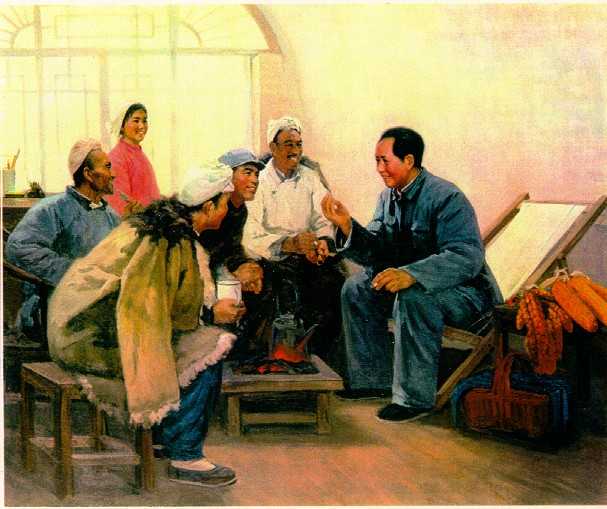The Mass Line and the American Revolutionary Movement
2. From the Masses, To the Masses
On June 1, 1943 the Central Committee of the Communist Party of China adopted a resolution on methods of leadership written by Mao Zedong. This document is included in Volume III of the Selected Works of Mao Tsetung under the title “Some Questions Concerning Methods of Leadership”. It marks the formal beginning of the theory of the mass line, and the advent of its conscious practice in the world communist movement. (For more on the origin and development of the mass line method see chapter 32.)
In this resolution two particular methods of leadership are urged upon Party members:
| |
There are two methods which we Communists must employ in whatever work we do. One is to combine the general with the particular; the other is to combine the leadership with the masses.[1] |
|
These two methods of leadership are both important and are interrelated; but of the two the method of combining leadership with the masses is the most fundamental:
| |
Take the ideas of the masses and concentrate them, then go to the masses, persevere in the ideas and carry them through, so as to form correct ideas of leadership—such is the basic method of leadership. In the process of concentrating ideas and persevering in them, it is necessary to use the method of combining the general call with particular guidance, and this is a component part of the basic method.[2] |
|
We will defer further discussion of this subsidiary method, that of combining the general with the particular, until chapter 13 and concentrate our full attention for now on the basic method.
The classic formulation of this basic method is given in the same resolution:
| |
In all the practical work of our Party, all correct leadership is necessarily “from the masses, to the masses”. This means: take the ideas of the masses (scattered and unsystematic ideas) and concentrate them (through study turn them into concentrated and systematic ideas), then go to the masses and propagate and explain these ideas until the masses embrace them as their own, hold fast to them and translate them into action, and test the correctness of these ideas in such action. Then once again concentrate ideas from the masses and once again go to the masses so that the ideas are persevered in and carried through. And so on, over and over again in an endless spiral, with the ideas becoming more correct, more vital and richer each time. Such is the Marxist theory of knowledge.[3] |
|
Although the term was not used in this resolution, this basic method of leadership, the method of “from the masses, to the masses”, is now also known as the mass line.

Painting of Mao on a tea break with peasants in Yanan (Yenan)
Any one-paragraph summation of something important enough to be called “the basic method of leadership” is bound to be highly concentrated. It necessarily calls for elaboration and explication. It raises a lot of questions. For example:
1) Just who are “the masses” anyway?2) What does it mean to “take the ideas of the masses”? All their ideas on every subject?
3) What exactly does it mean to “concentrate” or “systematize” the ideas of the masses? How do you go about “concentrating” opposed, inconsistent, or erroneous ideas that different people are bound to have?
4) Why should you have to propagate and explain these ideas to the masses—even when “concentrated”—if they came from the masses in the first place?
5) Why should the ideas of the masses be so important anyway? What makes anybody think these ideas are important for correct leadership?
6) What about Marxism-Leninism-Maoism and the facts of the objective situation: aren’t these things important for correct leadership too? But where do they fit into the mass line method?
7) Why do the masses even need leadership—especially if they already have all these good ideas themselves?
8) And anyway, what is the purpose of all this? What goal is being aimed at?
It would be easy to add to this list, but the point is clear enough: There is much in the mass line method of leadership which requires explication. Many points are simply taken for granted by Mao in his original formulation of the mass line. Other points were yet to be brought to the fore through practice—that is, through attempts to apply the mass line—and through struggle against erroneous interpretations of the mass line that have been championed by some, either out of ignorance or conscious opportunism. Thus over the years Mao himself, as well as other Marxist-Leninists, have commented on the theory of the mass line on numerous occasions; it has been elaborated and clarified. The task before us is to bring all these comments together into a systematic account.
Notes
[2] Ibid., SW 3:120.
[3] Ibid., SW 3:119.